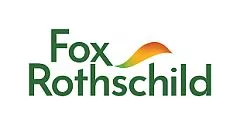- within Immigration, Litigation and Mediation & Arbitration topic(s)
- with Senior Company Executives and HR
- in European Union
- with readers working within the Automotive, Basic Industries and Insurance industries
A new bill currently pending in the U.S. Senate could have significant implications on what can and can't be patented in the United States.
The Patent Eligibility Restoration Act of 2022, introduced Aug. 2 by Sen. Thom Tillis (R-N.C.), addresses patent subject matter eligibility by rewriting 35 USC § 101. The original statutory language stays much the same so that "[w]hoever invents or discovers any useful process, machine, manufacture, or composition of matter, or any useful improvement thereof, may obtain a patent therefore." However, the new Section 101 provides explicit exclusions to patentable subject matter.
The express exclusions to patentability under the new Section 101 will replace the previous judicial exceptions, including the Supreme Court decisions of May Collaborative Services from 2012, Alice Corp. from 2014, and their progeny.
The new Section 101 exceptions include:
- A mathematical formula, apart from useful invention or discovery.
- An unmodified human gene, as that gene exists in the human body.
- An unmodified natural material, as that material exists in nature.
Processes are also excluded under the new Section 101 that are:
- Nontechnological economic, financial, business, social, cultural or artistic processes.
- Mental processes performed solely in the human mind.
- Occurring in nature wholly independent of, and prior to, any human activity.
The intent of itemizing the exclusions is to remove the current ambiguity created by the inconsistent application of the judicially created exceptions to patentability of abstract ideas, laws of nature and natural phenomena.
However, there is at least one of the exclusions that is still likely to be problematic: non-technological economic, financial, business, social, cultural or artistic processes. It is unclear what constitutes a technological solution. Currently, the United States does not have any jurisprudence that determines what constitutes a technological process to make a process patentable. However, it may be that U.S. courts follow Europe's technical problem-solution paradigm in determining patentability.
The good news regarding the proposed law is that the determination of patentable subject matter is separated from other patentability standards, including those of novelty and obviousness. Therefore, the U.S. Patent and Trademark Office and courts will no longer be able to consider whether an element of a claim is known, conventional, routine, or naturally occurring when analyzing patentable subject matter.
The possible unfortunate implication of the proposed law is that the use of new language within the exclusions may plunge the patent system into another number of years of uncertainty as the patent office promulgates new rules to apply the new standard and the courts determine the metes and bounds of the new exclusions.
We will continue to monitor the progress of the bill as it moves through the legislative process. For the immediate future, it is advisable to draft new patent applications incorporating the technological problem-solution writing style adopted by European practitioners.
The content of this article is intended to provide a general guide to the subject matter. Specialist advice should be sought about your specific circumstances.


